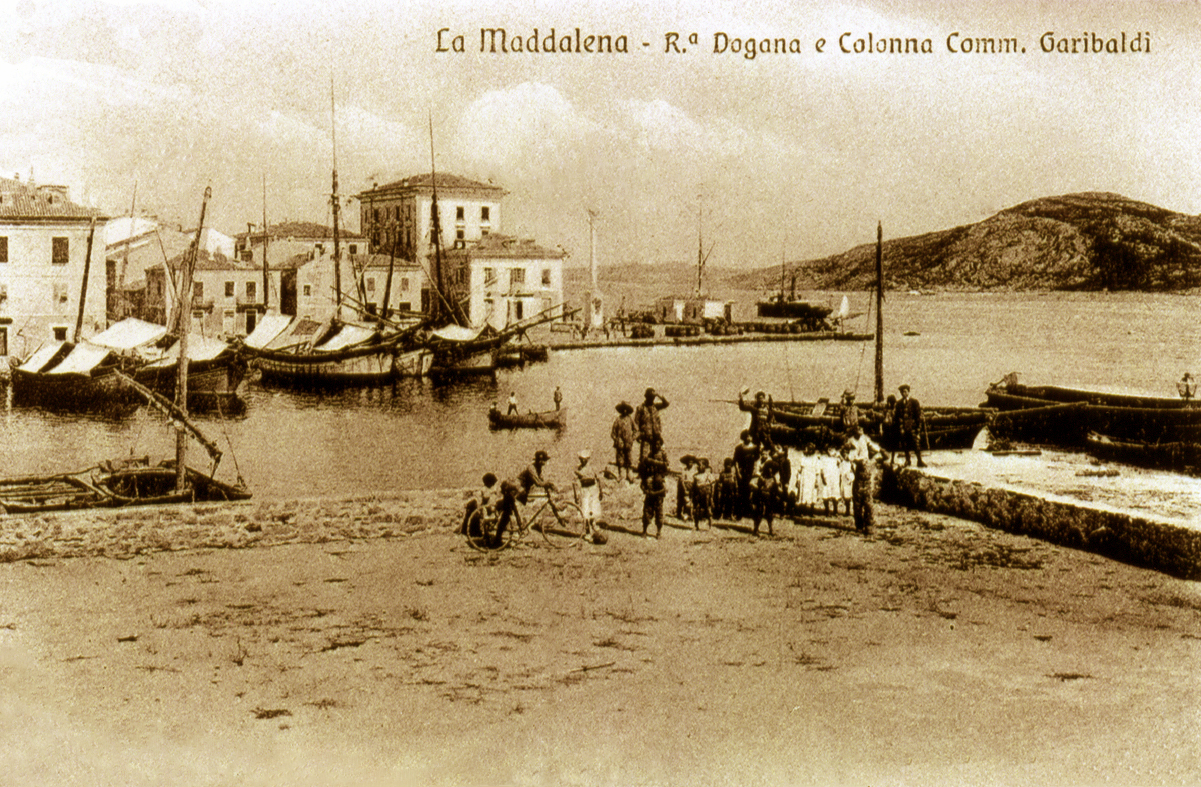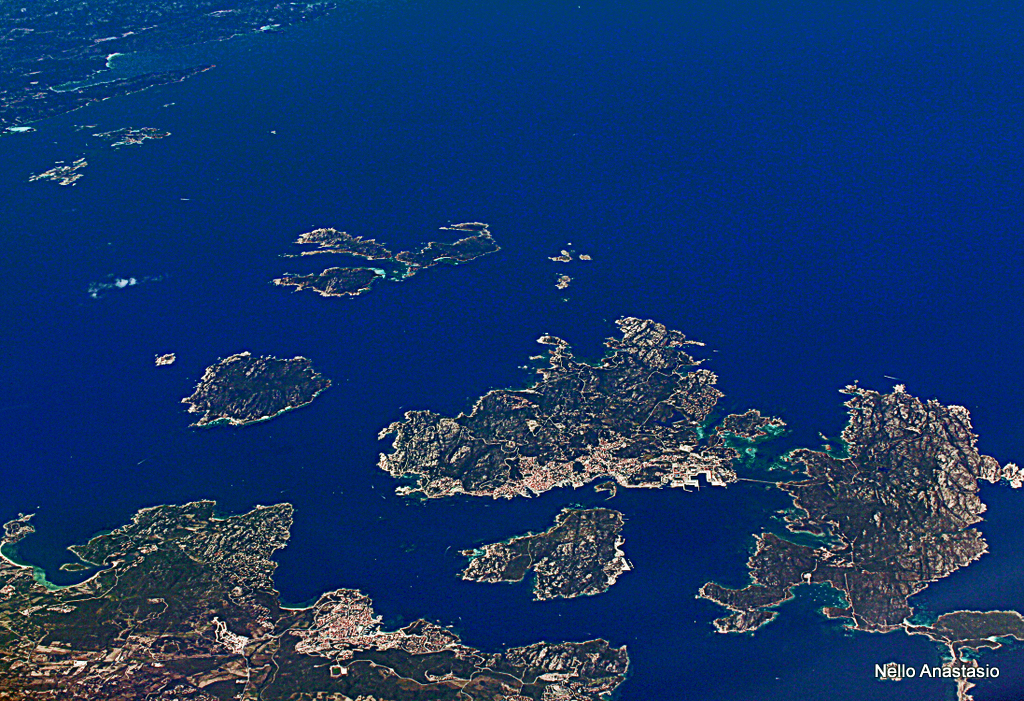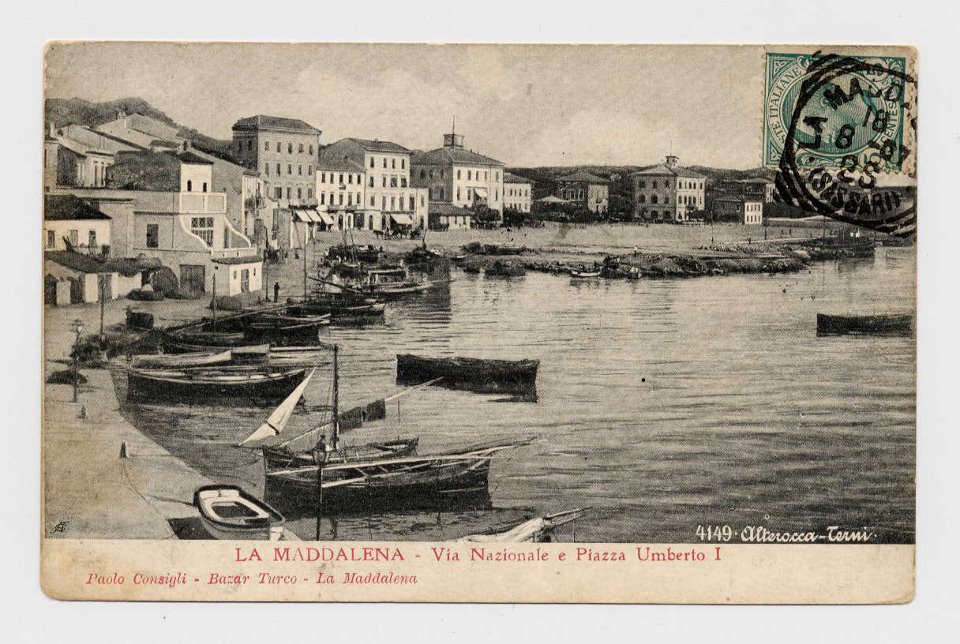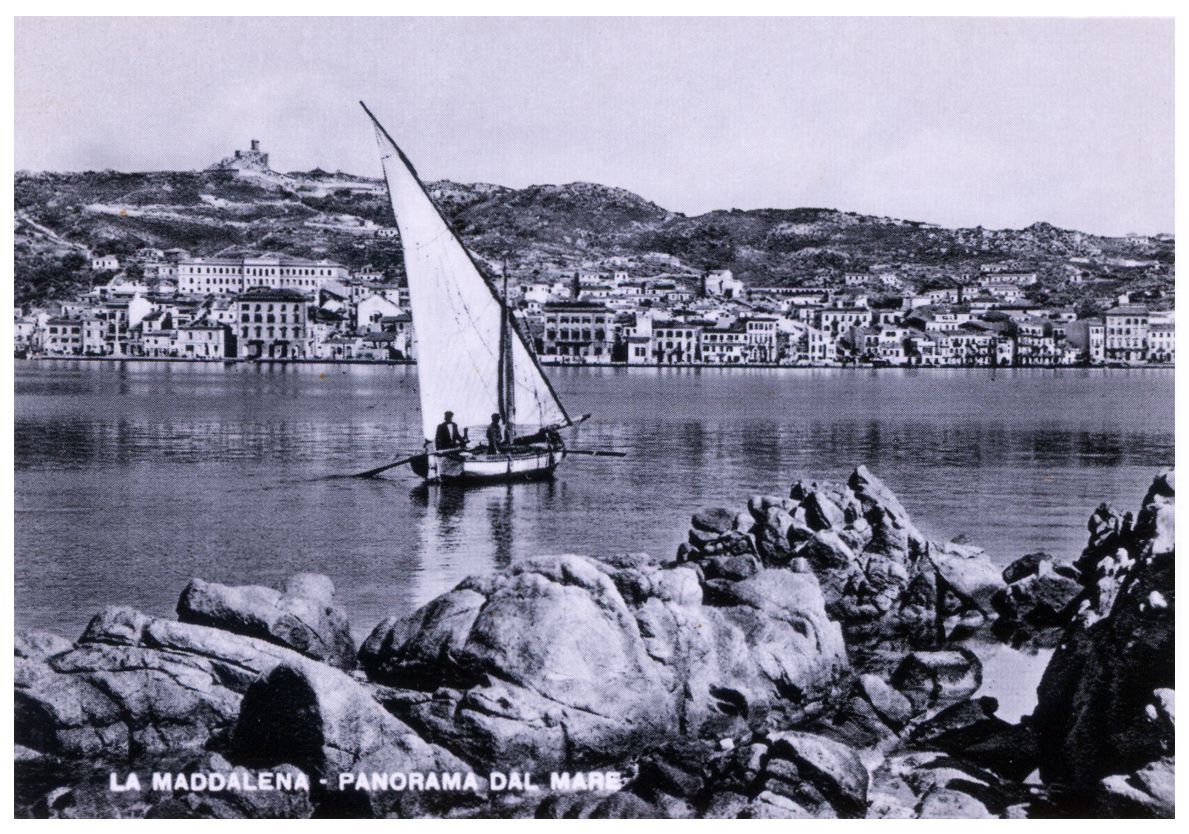The Magdalene islands were bright and distinct around us. The mountains of Corsica appeared nearer than those of Sardinia. ‘We will not return to Sassari, cried the Count, when he had made up his mind to relinquish the pursuit. Let us examine these islands which are but seldom visited, and when a favourable opportunity presents itself we will go to Corsica. I have been there before, the people are wild and warlike, but they are mountaineers, and not an inhospitable race. On the contrary, it is a point of honour with them to treat strangers with kindness. […]
We landed on Maddalena, the only one of the cluster that is inhabited. The population did not greatly exceed a thousand souls, chiefly Corsicans, who had emigrated after the unsuccessful exploits of the famous Paoli.
The whole surface of the island is encrusted with masses of rocks, covered with the orchilla weed; and the country has such an appearance of incurable desolation, that I can compare it to nothing but a portion of the fragments of a world that has been destroyed.
The little village to which our boatmen conducted us, was then, and I believe is still, the only one on the island. Indeed, if you were to visit it, you would not wonder that the inhabitants naturally gather themselves together. No one but a contrite Maddalen would ever, in that lone retreat, venture to live amidst the ruinous solitudes of the interior.” […]
One of the boatmen stepped on before to the town, and secured lodgings for us in one of the best cottages. […]
The cottage, in which we were to take up our abode, was recommended by an appearance of more industry among the inmates than any other in the place. The front of the house was attractively whitewashed, several articles for sale hung at the window, and on each side of the door stood casks of tunny, caviar, and olives. […]
“The Island of Maddalena, as I have already informed you,” continued the Majolo, is peopled chiefly by Corsican emigrants. Their way of life, at the period to which I allude, was bold, restless, and piratical.
The leaders had borne a distinguished part in the patriotic exertions of Paoli: they had descended from their ancient castles with a sounding tread and a lordly spirit. The failure of his virtuous, but rash, ambition, left them abandoned to the remorseless enmity of the victors, who persecuted them because they had subdued them.
Some of the patriots, after the departure of Paoli, sought an asylum among the rocks, the forests, and inaccessible fastnesses, and were compelled to turn the swords which they had drawn, to rescue the ravished liberties of their country against their earliest friends and fellow-patriots for support. The eyes of history will never discover the atrocities perpetrated in the woods and caverns of Corsica. […]
The hope of a fairer turn of fortune having gradually faded from the minds of the Corsican outlaws, the gloomy certainty of the entire mastery which the French had attained, settled darker and colder upon their hearts. The state of the world offered but little encouragement to military enterprise. Hundreds perished of hunger in the forests and recesses of the mountains; and when the peasants yet happen to find a skeleton, they mourn as they commit it to the earth, and remember that their country once was animated with the spirit of liberty.
“One of the chieftains, accompanied by a few of his followers, took up his abode in the lonely Island of Maddalena. In the course of a short time after, several other stragglers, who had waged the uncommissioned war against their friends and foes, also sought an asylum there.
At the period of my visit with Count Waltzerstein, the troubled temper of the first settlers, the mortified pride, and the thirst of vengeance, had subsided, and a sterner energy had usurped the place of patriotic enthusiasm. There was still however so much of the former spirit remaining as served to give an air of dignity to their ferocity, and to furnish a plausible plausible reason for the unprincipled manners to which they had abandoned themselves.
They treated the stranger with military frankness and clannish hospitality; but among themselves they did not recognise the existence of any law, and the restraints which wisdom and nature has consecrated by the name of the ties of kindred, were openly violated in a spirit of diabolical jocularity. […]
SOURCES OF THE ILLUSTRATIONS
Postcards and photos from the late 19th and early 20th century
Antonio Frau (Toni Cervo – Facebook), People of Corsica (Facebook)
Contemporary photos
Nello Anastasio – Flickr
LA MADDALENA E CAPRERA
© All Rights Reserved







